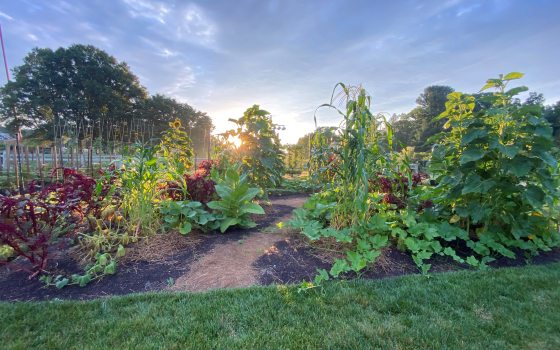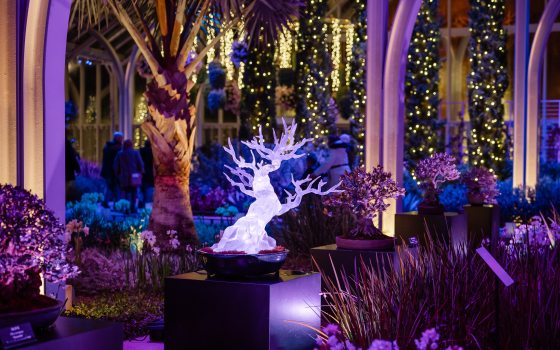This summer, the Idea Garden is home to three special plots that showcase a guest favorite, as well as culturally significant crops that tell robust stories. At the far western edge of the Idea Garden, you’ll find a plot of vibrant dahlias; a plot demonstrating the Native American “three sisters” companion planting system; and a plot of crops connected to the experience of Africans in America. Follow along as we walk through these plots and tell their stories.
In our three sisters plot, we’re showcasing the companion planting system that has been utilized by indigenous people for generations to grow corns, beans, and squash. We specifically sourced native crop varieties for this garden, including historic Lenape varieties—including Hannah Freeman bean (Phaseolus vulgaris) and Puhwem corn (Zea mays)—grown in this region. Corn, beans, and squash not only complement each other nutritionally—corn providing carbohydrates, beans providing protein, and squash other vitamins and minerals—but also help one another grow in the garden. Corn provides tall stalks on which the beans can climb, beans help fertilize the soil and stabilize the corn in the event of wind, and squash leaves help retain soil moisture and shade out weeds. We planted the three crops using the traditional method of making a mound of soil with corn planted in the center, beans in a ring outside the corn, and squash on the edges to fill the spaces between the mounds.
We used seeds from Truelove Seeds, Experimental Farm Network, and Johnny’s for the three sisters garden. Crops planted include Puhwem corn (Zea mays), Blue Shackamaxon bean (Phaseolus vulgaris), Nanticoke squash (Curcurbita maxima), Seminole pumpkin (Cucurbita moschata), Hopi dye sunflower (Helianthus annuus), amaranth (Amaranthus cruentus ‘Hopi Red Dye’), tobacco (Nicotiana tabacum ‘Virginia Smoking’), and Hannah Freeman bean (Phaseolus vulgaris). Amaranth and sunflowers are sometimes considered “cousins” or fourth sisters of the three sisters, often grown along with the three sisters of corns, beans, and squash.
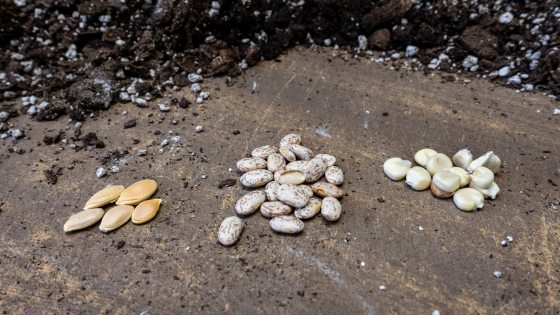
From left, Nanticoke squash, Hannah Freeman bean, and Puhwem corn seeds await planting in April 2022. Photo by Carol Gross.
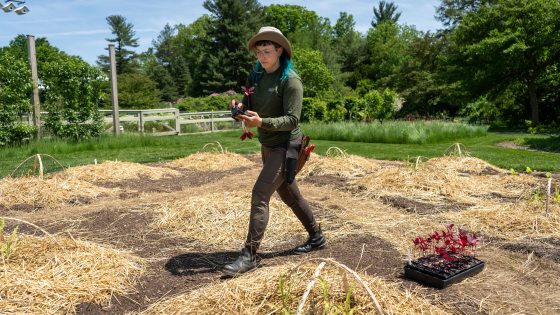
Senior Horticulturist Alex Correia plants amaranth, Amaranthus cruentus ‘Hopi Red Dye’, in the three sisters plot in late May 2022. In the middle of the mounds are young corn seedlings just starting to grow. Photo by Carol Gross.
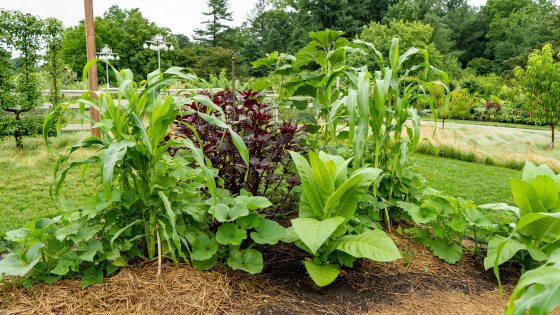
This early July 2022 photo shows the three sisters garden’s continued growth, with Puhwem corn, Hannah Freeman bean, and Nanticoke squash planted in a mound with the sunflower, amaranth, and tobacco around the mound. Photo by Carol Gross.
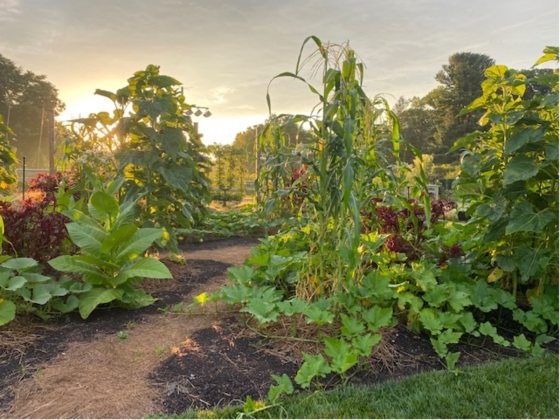
The three sisters garden, as pictured in July 2022. Photo by Alex Correia.
In a neighboring plot, we planted crops connected to the experience of Africans in America, using seeds from Southern Exposure Seed Exchange and the African Diaspora Collection by Truelove Seeds, which includes many crops that either originated in African or became staples in the new world. Not all of the crops we planted at Longwood are native to Africa, but they are connected to African American history and culture. We planted okra (Abelmoschus esculentus ‘Clemson Spineless’), southern pea (Vigna unguiculata ‘Whippoorwill’), sweet-potato (Ipomoea batatas ‘Georgia Jet’), sorghum (Sorghum bicolor ‘Sugar Drip’), and cotton (Gossypium hirsutum ‘Red Foliated’).

Cotton, Gossypium hirsutum ‘Red Foliated’, seedlings await planting, photographed in April 2022. Photo by Carol Gross.
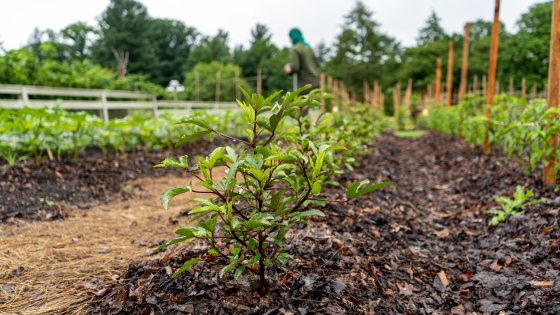
This early July 2022 photo shows the garden’s continued growth, with roselle (Hibiscus sabdariffa), a type of edible hibiscus used to make vibrant red beverages, at the forefront. Photo by Carol Gross.
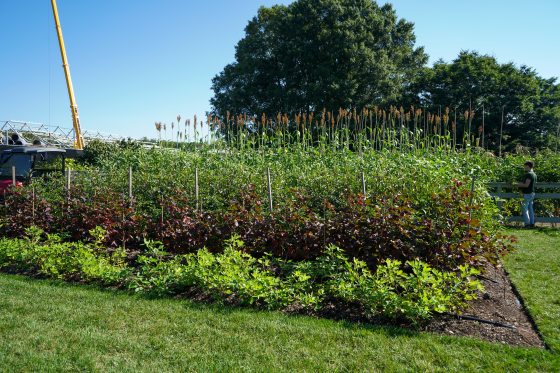
The African Diaspora garden, as pictured in early September 2022. Photo by Carol Gross.
Come see these beautiful—and meaningful—plantings, on view in our Idea Garden until mid-October.
